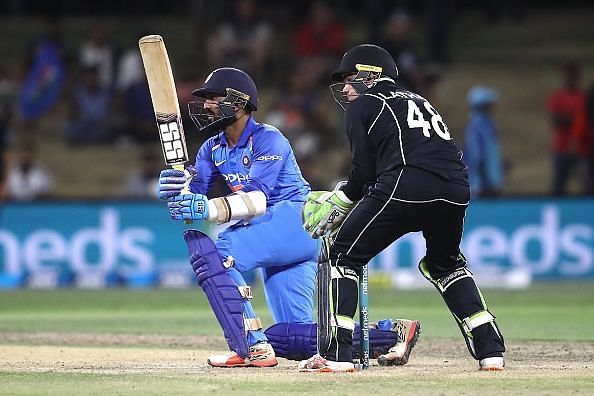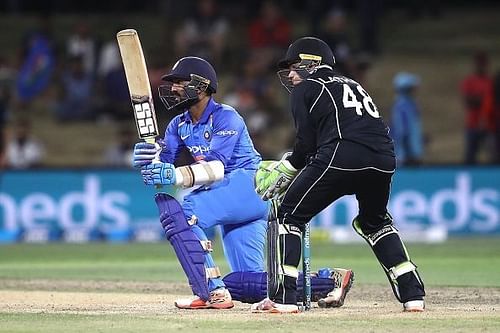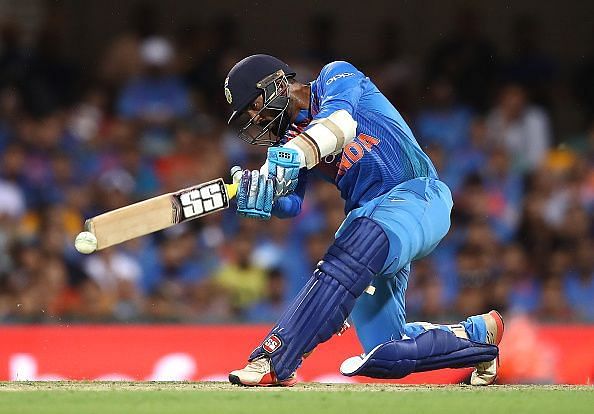
Analysing why Dinesh Karthik denied Krunal Pandya strike in the final over of 3rd T20I against New Zealand

This is not an attempt to try and defend Dinesh Karthik's act in the final over of the final T20 international against New Zealand at Hamilton.
Rather, it is an attempt to make sense of his decision.
What was possibly going on in the veteran wicket-keeper batsman's head? What was he thinking? Was DK over-confident? Did he believe he could do an M.S.Dhoni?
Perhaps his heroics in the Nidahas Trophy final gave him the confidence to back himself. After all, he averages 56.44 in his last 16 T20Is at a strike rate of 163.31. But that just cannot be a valid justification. In fact, Karthik gave ample strike to a scratchy Vijay Shankar in that famous win.
So why did he not trust Krunal Pandya this time around? After all, Krunal is a capable batsman too. There must be a reason for Karthik's obvious lack of faith in the all-rounder's skills with the bat.
Did Krunal let Karthik down in the past? Maybe he did.
Maybe it had something to do with one of India's recent T20I defeats. Just maybe. Hear me out.
India's Trans-Tasman tour has been quite a long one. So it is understandable if you forgot how the assignment began. Here is a quick recap of the first T20I between India and Australia held at the Gabba, Brisbane.
MATCH SUMMARY - Australia 4 for 158 (Maxwell 46, Kuldeep 2-24) beat India 7 for 169 (Dhawan 76, Zampa 2-22) by four runs via the DLS method

In a closely fought contest, Australia edged past India by 4 runs via the DLS method. India, at one stage, required 69 runs off 32 balls to win when Karthik walked out to bat at 4 down.
But a late rally worth 51 runs off 23 balls (courtesy his partnership with Rishabh Pant) helped India take the game till the last over.
India required 13 from the last over to clinch the opening match. Who were the batsmen at the crease?
Dinesh Karthik and Krunal Pandya, of course.
In case you missed the obvious parallels between the two games, here is a round-up below.

The last over was delivered by Marcus Stoinis. The elder Pandya was on strike.
Stoinis bowled a slower delivery wide outside off. Krunal wanted to pull the ball through mid-wicket. Instead, the ball took the toe end of the bat and travelled to the left of mid-on.
DK and Krunal managed to run two and the all-rounder was on strike again. This time, though, everyone expected Karthik to retain strike. And quite rightly so.
Krunal had just faced a single delivery without scoring up until that point in the innings. On the other hand, DK was playing a blinder having notched 30 off 12 balls. Karthik had to face the bowling. But, just like how he had backed Vijay Shankar against Bangladesh in the Nidahas Trophy, he backed Krunal Pandya here.
It was an error in judgment from Karthik and India eventually lost the game as a new-to-the-crease Krunal failed to get going. A dot ball later and he was out, leaving Karthik with too much to do.
That mistake might have played on his mind when he was at the crease this time around against New Zealand. The Vijay Shankar incident too may have played a part. Maybe he felt as a senior player it was his job to complete the run-chase. Moreover, the team management has insisted that Karthik's role in the team is as the designated finisher.
All the above thoughts might have scrambled the 33-year-old's mind. This time, Karthik clearly should have trusted his partner. Pandya was batting on 25 from 12 balls; not 0* from 1.
Karthik can still take a cue from M.S. Dhoni, a long-standing pioneer in wicket-keeping and finishing, on how to have an uncluttered mind while handling these pressure situations.
Karthik took a stunner in the field in the first T20I against New Zealand. He also dropped a couple of sitters in the same innings. He scored a blistering 33* from 16 balls in the final T20I. He also failed to seize a crucial moment in the game at the end.
This has been the pattern of Karthik's entire international career.